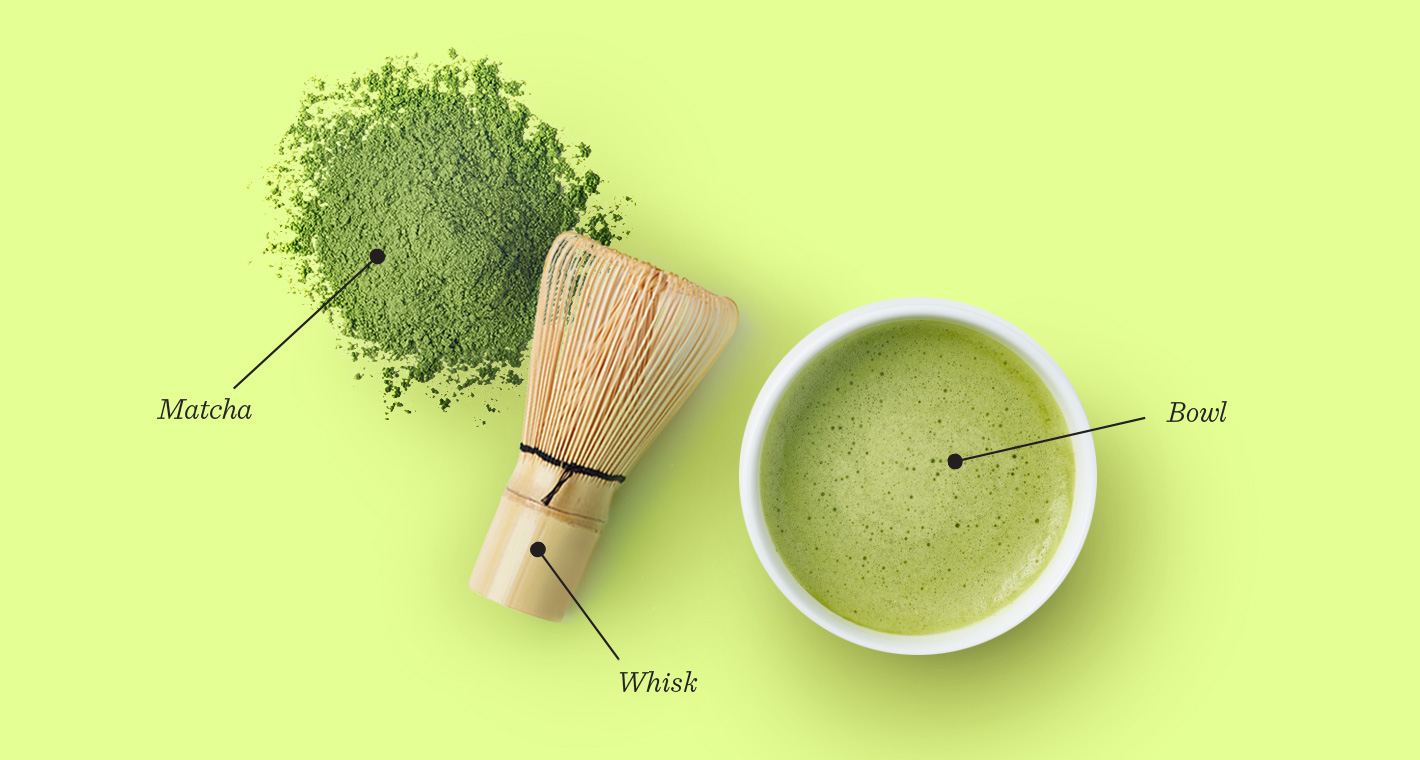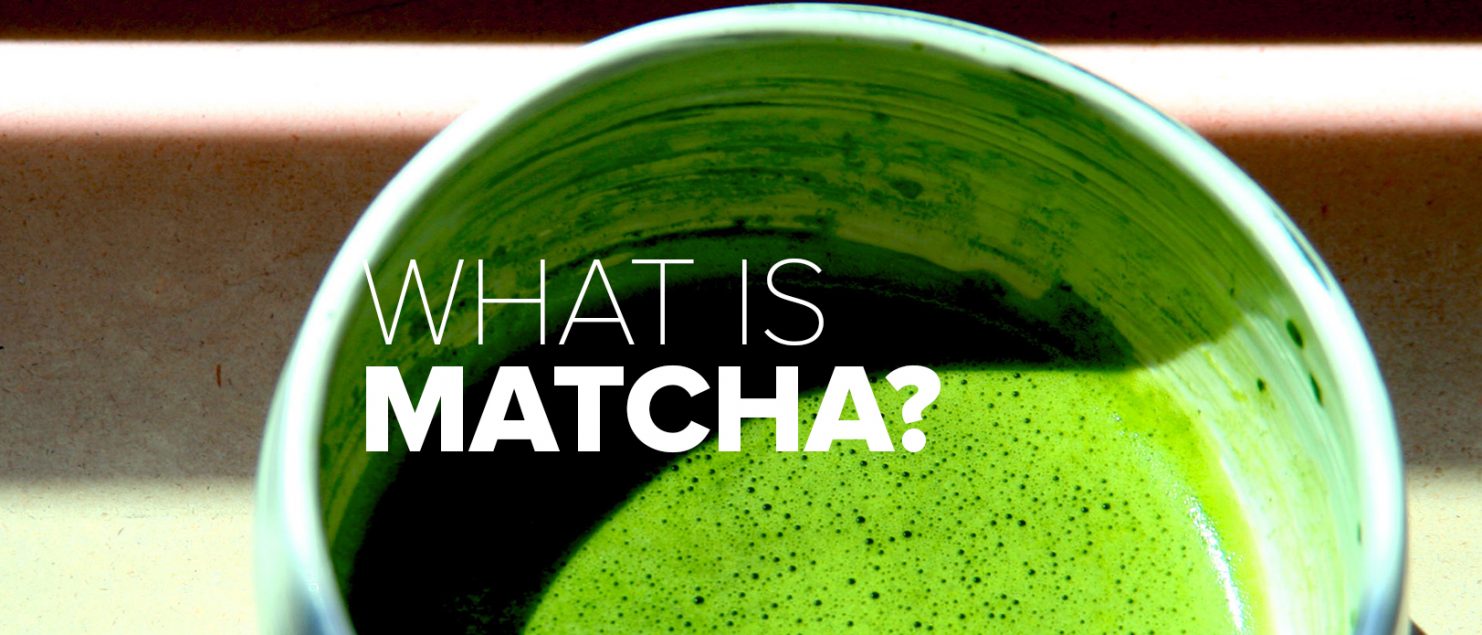Everything You Need To Know About Matcha
Coffee is by far America’s #1 choice for caffeine but what do you drink when your stomach can’t handle the acidity? Most folks I know conclude there’s no good solution other than to settle for lesser forms of caffeine and move on. Oh the horrors! I used to be a coffee addict and, although my stomach can handle it, I phased it out over my college years because of the nasty breath and teeth staining that came along with it. I’m not going to lie, I take caffeine in a supplement form first thing in the morning to save time before I hit the road for a run but I enjoy drinking something at work to relax and refocus. I tried traditional black and green teas but like a stronger flavor and doubling up tea bags gets costly. There also wasn’t quite the level of caffeine in tea that’d I prefer (can you tell I’m a junkie). Enter Matcha! I first stumble upon this vivid green beverage on instagram and probably spent over an hour gawking at all the stunning variations and creative ways people use it. Matcha is actually a type of green tea but on steroids. That’s no understatement, it has 130x the antioxidants of standard green tea, a hefty dose of slow-release caffeine. The great thing about it is it can be used in so many ways that you’ll want to make it a kitchen staple immediately.
Origin
Matcha can be traced back to China’s Tang Dynasty where tea leaves were regularly steamed, dried, and packaged for trading purposes. After the growing and processing stages, the tea was traditionally prepared by toasting and grinding the leaves to a very fine powder before they were mixed or whisked with boiling water in small bowls. This method of preparation became a common ritual for Buddhists in traditional tea ceremonies practiced in their temples for centuries. Matcha was used to help monks stay alert but still calm and relaxed during long periods of meditation. Eventually Zen Buddhism and the powder tea preparation method made its way to Japan in 1191 by way of monks and have since died off in China as a traditional beverage. However, the powdered tea has made a comeback in recent year as a trendy modernized drink and as a featured ingredient in many Asian dishes.
Production
Matcha seedlings start the same as any other green tea you can pick up at the store. What makes it unique is the tedious and technical growth, harvesting and processing methods the tea plants undergo. The technical name of the plant matcha comes from is camellia sinensis and there are a few variations of the tea with some being more prized than others. The three most coveted varieties, calledsamidori, okumidori, and yabukita, come from Japan and are renowned for their brilliant color, smooth finish, and superior frothability when being prepared. They are the gold standard of matcha and are difficult to come by on the states side as they lose their favorable color, texture, and flavor due to the oxidative effects that set in the longer they’re exposed to oxygen.
Matcha tea leaves are grown in extreme shade for 3 weeks. The most traditional practice is to lay large bamboo screens over the tea seedlings allowing a small bit of sun and air in so the plants don’t rot. This method of shading method slows down growth, keeping the plants tender and also forces the tea to create extremely high levels of chlorophyll giving matcha its trademark vivid color and boosting the production of amino-acids. After the 3 weeks are up, the best tea buds are picked, flash steamed to prevent fermentation and laid out flat in rows to dry. After the leaves have dried completely, they are deveined, de-stemmed, and ground slowly with a very dry stone to create matcha tea powder.
Where To Buy
My experience is that you’ll need to buy matcha online. You can occasionally fine a matcha-like powder (low grade matcha) at specialty bake shops and Dean & Deluca but I’ve yet to find a high quality, good sized bag for a decent price here in Kansas City. I’m sure other cities will vary. Give your local health store a call and see if they carry it or can order it wholesale. I’ve had a great experience purchasing mine from Amazon. They have a variety of venders both domestic and international and a huge selection. A rule of thumb while selecting a matcha is the darker the vibrant green color the better. If the tea appears mossy light green or yellowy, it’s old and has oxidized to a point where it has lost most of its nutrient dense properties. Obviously you won’t be able to assess that tangibly when buying online so do your research, read reviews, and avoid “green tea powders” as they will be a lower grade product.
You will also need to purchase a matcha mixing kit or at minimum a bamboo whisk. There are plenty of low cost options online as well and they won’t put you back more than a couple bucks. It’s a vital part of preparing your tea which I’ll explain next. The first time I purchased matcha I opted out of the kit and preparing it was a disaster.
Preparation

In addition to selecting and purchasing your matcha, you will need a traditional bamboo matcha whisk (pictured). Metal whisks or forks will NOT work. A shallow 4-5 inch mug or bowl works best for mixing it up. Some people recommend buying a small sift to break up the clumps in the tea but I find that whisking it while dry works just as well. I put 1-2 teaspoons into my mug, give it a good whisk to break it all up then add about 2 oz. of boiling water and whisk it rigorously to make a thick syrupy consistency. This step gets any clumps broken up that I missed in the dry whisk step. Add another 4-6 oz. of boiling water depending on how strong you like it and whisk again until frothy and light. Voila!
Health Benefits
I could write another whole article just on the health benefits of matcha.
- To start, 1 cup matcha has the antioxidant levels of 10 cups traditional green tea. But it gets better, these aren’t just any antioxidants, they are a unique type called catechins that are only found in green tea. Catechins have powerful cancer fighting and free radical neutralizing properties. If you haven’t read it yet, my article, Eating to Reduce Oxidative Stress, covers in-depth just how vital antioxidants are for our bodies to heal themselves and prevent longterm inflammation. A couples cups of matcha and you’re well on your way to relieving your daily oxidative stressors and then some.
- Matcha supports healthy weight management with a slow release form of non acidic or jittery caffeine that gently boosts your metabolism without raising your heart rate or blood pressure. The American Journal of Clinical Nutrition conducted a study that showed individuals improved their ability to burn calories from 8%-10% of daily energy expenditure up to a whopping 35%-43% of daily energy expenditure. Burning calories was never so tasty.
- L-Theanine found in matcha is linked to memory enhancement and calms anxiety. Unlike most forms of caffeine matcha does not produce the jittery effect that can send your mind into ADD mode. Try it before a big test, interview or marathon study session. You’ll feel poised and sharp as a nail.
- Building off the antioxidant perk, matcha boosts and supports your immune system. This benefit is the result of the antioxidants doing their job and detoxifying your system so that inflammation is low and your body’s natural ability to fight disease is increased. When you’re no longer tied up fighting free radicals you can start fighting the big stuff and the result is less sick days!
Alternatives Uses
Aside from being a delicious and nutritious beverage, matcha has taken off as a start ingredient in modern baking. It’s beautiful color and potent green tea flavor transforms cakes, cookies, and ice cream. You can find endless creative recipes for just about any dessert online. I experimented a couple weeks ago with a pistachio matcha cake that got rave reviews (will post the recipe soon). Try matcha for Saint Patrick’s Day baked goods instead of green food coloring this year! Serve them up with a matcha latte and impress your friends with the festive and far more healthful alternative to green beer. Cheers! – L

